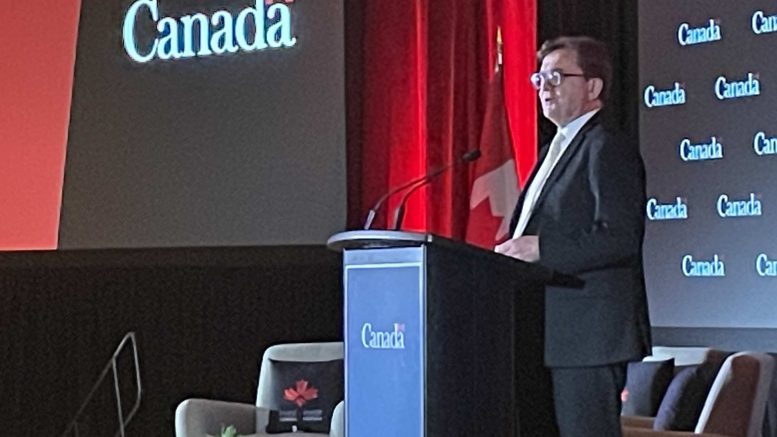Canada’s federal government will extend a tax credit on mineral exploration by two years to boost investment in junior mining companies, Energy and Natural Resources Minister Jonathan Wilkinson told a conference in Toronto.
The mineral exploration tax credit, a capital market tool that offers investors a 15% tax credit to invest in flow-through shares of small project holders, was due to expire on March 31.
“I am very pleased to announce that the mining exploration tax credit will be extended for another two years,” Wilkinson said Monday during a session at the Prospectors & Developers Association of Canada (PDAC) annual convention. “This is a crucial piece to ensure capital is directed into early-stage mine development.”
The tax credit should create $700 million in in flow-through share investment to support mineral exploration, the minister said. He also declared the $500-million second round of the government’s critical minerals infrastructure fund open for project applications, and that a critical minerals development fund is getting another $50 million.
Industry demand
Renewing the tax credit for more than a year – and potentially making it permanent – was one of the key demands of the PDAC. Failing to do so would have weakened the Canadian mining industry because the credit is a critical part of the country’s fiscal landscape, Jeff Killeen, PDAC’s director of policy and programs, told The Northern Miner last month.
PDAC President Raymond Goldie told The Northern Miner on Monday it’s unclear how the new measure can be implemented while Parliament is prorogued. Parliament is scheduled to resume on March 24, but the NDP has vowed to side with the Conservatives in a vote to defeat the sitting Liberal government. That would trigger an election call and all bills not passed would die.
The infrastructure fund has so far backed improvements to the northwest British Columbia highway in the Golden Triangle area, Wilkinson said. The development fund has earmarked $38.5 million for eight projects preparing for construction. There is also $6.5 million for innovation in technologies and to increase economic participation of Indigenous communities in mining, he said.
Some projects gaining from the funding are E3 Lithium’s (TSXV: ETL; US-OTC: EEMMF) brine-to-battery metal project in Alberta, which is receiving $5 million, Wilkinson said. Canada Nickel’s (TSXV: CNC; US-OTC: CNIKF) Crawford project tapping the world’s second largest nickel reserve, is being funded with an unspecified amount by the critical minerals infrastructure fund to connect to Ontario’s grid while another federal fund, the energy innovation program, is to transform its nickel mining tailings into permanent carbon storage.
First Nations
Canada Nickel signed on Monday an agreement for early business and employment opportunities for the Mattagami, Matachewan and Flying Post First Nations regarding the project. The parties are working towards an impact benefits agreement, the company said.
Crawford’s regulatory approvals are expected this year, the minister said. Once in production, the mine is expected to create 1,500 jobs. Last year, South Korea’s electric battery car manufacturer Samsung invested US$18 million in Canada Nickel.
Wilkinson said the federal government is working with provincial and territorial counterparts to streamline project approvals and environmental assessments. Elsewhere at PDAC on Monday, Ontario Premier Doug Ford called for Ottawa to abolish all federal level assessment to speed up projects.
The minister said the federal critical minerals strategy, which began in 2022, has seen a 15% increase in the production of key minerals after investments of $305 million from the infrastructure fund across 31 projects, while it has spent about $500 million through the Strategic Innovation Fund in critical minerals projects to build processing capacity. Export Development Canada is taking steps to formalize investments totalling $1.3 billion to support three critical minerals projects, he said.
On the tax credit, Wilkinson agreed with PDAC members it’s needed to drive exploration funding.
“As you folks will know very well, there is a need to incent risk capital. There is presently not enough capital flowing into this space,” he said. “Federal instruments have been important tools in creating incentives that are necessary for this critical part of the value chain to advance and the mining exploration tax credit has been critical in this regard.”


Be the first to comment on "PDAC: Canada extends mineral tax credit"